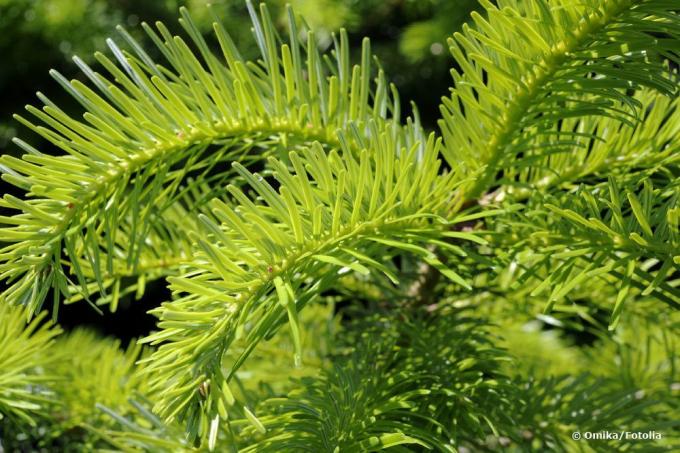
table of contents
- Growth of Nordmann firs
- Growth per year
- Narrow growth
- Growth regulation
The Nordmann fir (Abies nordmanniana) is probably the most popular Christmas tree in this country. With its soft, shiny needles, it adorns many a room every year at Christmas time. In principle, it could stay there for a very long time, because the fir does not needles that quickly. In addition, these imposing trees can be found in parks or cemeteries and can also be planted in large gardens. It takes some time until they have reached a considerable height there.
Growth of Nordmann firs
Among the fir trees, the Abies nordmanniana is probably the most famous classic at Christmas time. The mighty tree originally comes from the Caucasus and is therefore also known as the Caucasian fir. In the 19th In the 19th century it came to Central Europe through the Finnish biologist Alexander von Nordmann. In its home country, the fir can easily reach a height of between 40 and 60 meters and a trunk diameter of over 3 meters. Planted in the home garden, it requires a lot of space, because there is one here too
Height from 15 to 25 meters and a Growth in width between 6.50 and 8.00 meters No rarity. Nordmann firs can live to be very old, up to 500 years.Planted free-standing, these fir trees with their symmetrical, pyramid-shaped growth are worth an eye-catcher. The branches reach evenly to the ground. Even with increasing age, there is no baldness in this area. Further characteristics of the Nordmann fir are
- strong, dark green, blunt and shiny needles
- brush-like and dense arrangement
- Two white stripes on the underside
- straight trunk
- almost horizontal branches
- deep taproot, therefore very storm-proof
Note: The flowers that appear in May serve as a source of food for bees.
Growth per year
The growth of the Nordmann fir is relatively slow, especially in the first four to five years. They then grow a little faster with increasing age. In the individual growth phases, new shoots (tips) are always formed. These are also known as terminal shoots and are very susceptible to frost and game browsing. In addition, instead of damaged branches, new laterally adjacent shoots are formed. This development of "additional shoots" has a very unfavorable effect on tree growth. Several peaks are formed in the process.
The growth per year is less than 30 cm in the first years of standing. After about five years, however, the Nordmann fir grows much faster. Then an annual increase in height between 30 and 40 cm and growth in width up to 20 cm can be recorded. So the fir tree in the 10th Can reach a height of two meters. Then also up to 15 cm initially green and later brown cones appear. These stand upright on the branches and disintegrate in winter. Only now does the strikingly wide crown slowly unfold.

Abies nordmanniana can definitely be classified as slow-growing. Compared to the Nordmann fir, the growth per year for other conifers is the same
- Noble fir 5 to 10 cm
- Blue fir 25 to 60 cm
- Douglas fir 30 to 50 cm
- Red spruce 25 to 50 cm
- Japanese crescent fir 40 to 70 cm
Note: Due to its slow growth, the Nordmann fir can easily be grown in a correspondingly large tub in the first few years. It can then simply be potted and used as a Christmas tree.
Narrow growth
Sometimes it is also necessary to stop the growth, for example if there is a lack of space. There are various measures here, but it is not certain whether these will always be so successful. In any case, this must be done carefully to avoid major damage.
Pruning
As a rule, conifers cannot be pruned back well. The reason is that with these trees old wood does not sprout again like with other trees. A pruning should not be done until the beginning of July at the age of three years after flowering. The outer shoots can be shortened a little by simply snapping them off. The tip can also be shortened if necessary. Sometimes it can branch out and grow further.
Root cut
Usually this happens cut only in shallow roots such as spruce. In young Nordmann firs, however, there is the possibility of trimming the taproot a little bit in length. Caution must be exercised in order to avoid severe damage to the tree.
Growth regulation
There are corresponding pliers in specialist shops for this purpose. This tool is then used to cut through the growth layer at various points. This layer is in the bark of the tree. This process interrupts the flow of juice. Ultimately, this can delay tree growth. However, these pliers are not very cheap.

Note: Nordmann firs are very sensitive to air pollutants and bad air in their location. This can lead to delays in growth, especially in the case of a young fir.
